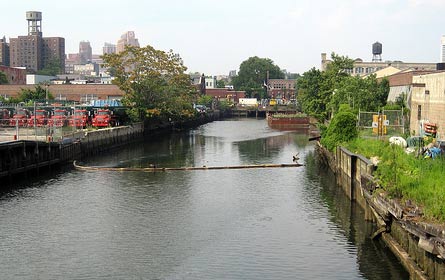City Turns Deaf Ear to Noisy Neighbors
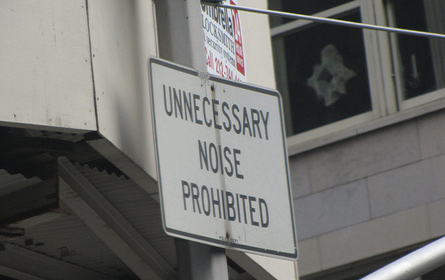
Teens living above an East Village woman laughed at her when she asked them to stop running and jumping all night while her family tried to sleep. An actor in Harlem lived peacefully in his apartment for 10 years until a new renovation left him hearing every tread, scrape and footfall, interrupting his sleep. And a senior citizen with a heart condition in the Upper West Side was called senile and visited by mental health professionals after she repeatedly complained about a next-door neighbor who plays her stereo all night long.
Over 65,000 people complained to the city's 311 line about noisy neighbors in fiscal year 2009, making it the number one noise complaint in the city. This is four times as many as the next most common complaint, street noise, and ten times the number of complaints about noise from a club or bar. And yet, although the city’s vaunted noise code addresses the latter two issues, it offers no provisions to deal with noisy neighbors. Sleep-deprived, frustrated and feeling helpless, those afflicted by loud, uncooperative neighbors often find they have almost nowhere to turn.
"Cities from all over the country quote our noise code," said Arline Bronzaft, an environmental psychologist and chair of the Noise Committee at the Council on the Environment of New York City, "but New York City is in the dark ages when it comes to neighbor noise."
Public Noise, Public Health
New York City’s updated noise code, which went into effect in 2007, addresses many nuisances outside the home — car stereos and alarms, clubs and bars, barking dogs and construction noise — and calls for enforcement by the city's Department of Environmental Protection or the police department. But the internal din of urban dwellings continues, eroding the quality of life.
Most New Yorkers live in apartment buildings, old and new, that act like finely tuned instruments transmitting the sound of every footfall, toilet flush, dropped object and vibrating appliance — not to mention loud arguments, children playing, pets, musical instruments and, yes, sex noise. Add to that the rumble of modern entertainment systems, manufactured and advertised to maximize bass frequencies that can penetrate nearly any building material. Modern work life exacerbates the tension over noise, as many New Yorkers work at night and sleep in the day or work from home -- and so need quiet during noisy daytime hours.
Studies have found noise to be more than a nuisance. In its Guidelines for Community Noise, the World Health Organization writes, "Noise pollution continues to grow" and "involves direct, as well as cumulative, adverse health effects."
The organization identifies broad categories of negative health effects from unwanted noise including interference with speech and learning, sleep disturbances, cardiovascular and physiological effects, mental health effects, effects on performance and productivity at school and work, and effects on residential behavior and annoyance.
"People say you should just get used to it," said Richard Tur, a New York City resident and founder of NoiseOFF.org. "What’s been lost is that noise pollution is a public health issue."
Nowhere to Turn
On a volunteer basis Bronzaft counsels people with neighbor noise problems. Most have approached raucous neighbors who have been unresponsive or downright hostile.
"The country's founders passed a bill of rights," said Bronzaft, "but not a bill of responsibilities."
Calls to 311 are referred to the police for non-emergency response, but the police cannot do much, since there are no specific laws about making a racket in one's own apartment. Officers often arrive on the scene hours after the disturbance, and the most they usually can do is ask the offender to turn the volume down -- and the person can turn it back up when the police leave.
People find themselves rearranging their lives to avoid noise. The actor in Harlem, who asked not to be named because he is taking his landlord to housing court, has curtailed his social life to get to bed earlier. Lu works from home and now breaks up her workday with naps.
Lu said her youngest daughter would wake up crying about monsters upstairs and had a hard time waking up for school.
"I shouldn’t have to schedule my things around the noise and make my sleeping time accommodate the noise," said Lu. "There should be some kind of agency you can go complain to about this kind of noise. We don’t know where we should go."
Looking for Answers
Under current law, Lu and others like her have few alternatives. But those involved with the issue see a number of avenues the city could pursue to quiet noisy neighbors.
Bronzaft thinks the onus is on landlords to provide a noise-free living environment under a lease’s warranty of habitability. If a tenant gets to the point of suing, she said, the complaint should be against the landlord and not the other tenant. She also thinks that the city or state government should require that the warranty of habitability in leases specifically promises a residence free from noise.
New York City Councilmember Daniel Garodnick agrees that explicit provisions dealing with noisy neighbors in standard leases would be a useful tool but questions whether the impetus for such a change should come from the city.
"It happens to be in the best interests of landlords and tenants to explicitly set out rights and privileges of every apartment at the outset," said Garodnick. "That route could be done independently of government.”
But in the absence of neighbor noise laws, landlords have fewer tools to try to quiet things down.
"[Noise] is one of the most difficult complaints for a landlord to deal with," said Elizabeth Crane, a landlord with nearly 1,000 tenants, mostly in the Bronx.
Crane says she gets noise complaints all the time and always addresses them because she does not want to lose good tenants to noise. She starts out with gentle letters but it can end up in a court action costing her thousands of dollars in legal fees and lost rent.
The Law of Common Sense
"Your right to make noise stops at my ears," said Bronzaft. The problem, she said, is that "you can't legislate decency."
Many cities try. Los Angeles, Dallas, Atlanta, San Francisco, Boston and Detroit all have laws against high volume neighbors. Usually the laws give some decibel threshold, and set fines for offenders. In London, England an individual fine for making too much noise can go up to 5,000 pounds.
"The issue with decibel measurement," said Tur of NoiseOFF, "is that the real question is what effect is the noise having on a person's life. If you can't enjoy your apartment or sleep at night, it's hard to put a number on that."
Tur wants New York City’s noise code to address neighbor noise and provide enforcement power to police.
"If it can be proved a neighbor is causing noise," said Tur, "police should have enforcement by way of police summonses or fines. I think that's reasonable."
Louis Hagler, a retired physician who has written extensively on the health effects of noise, goes further. "If [a neighbor's noise] comes into my residence," said Hagler, "it’s a criminal assault and should be treated that way."
Garodnick said he is interested in exploring whether neighbor noise should be included in a law passed by the city. But he cautioned that violations can be difficult to substantiate.
"You still need a ticket writing authority to be there to experience it," he said.
Vibrating Buildings
And what about those unintentional everyday living sounds that drive New York City apartment dwellers crazy?
"I can’t tell people to take off their shoes or not to go to the bathroom in the middle of the night, or not to move a chair," said landlord Elizabeth Crane.
How a building is constructed has a lot to do with how it conducts sound. Sound transmission class (STC) is a method for measuring how much sound a barrier, such as a wall, blocks. STC ratings have to do with the types of construction techniques and materials used in buildings. In a survey of residents of row houses and apartments, the National Research Council of Canada found that annoyance over neighbor noise dropped when walls had an STC of 50 or above and stopped completely at 60.
New York City's updated building code requires a minimum STC for airborne sound of 50 in dwelling units, but it only applies to new construction. Research by Quiet Solution, a company that manufactures soundproofing materials, has found that dampening the sound of a medium-size home theater requires an STC of 60.
"The building code could be another route to addressing these issues, and that would most certainly be within the city’s jurisdiction," said Garodnick.
Let’s Talk This Through
Short of such changes, the solution to all-out neighbor wars over noise can be quite simple — laying carpet, wearing headphones, moving the TV or, in one of Bronzaft’s cases, painting a line on a radio's volume knob — if the parties are able to talk to one another.
"A noise dispute is really an interpersonal issue," said Melissa Appleton of the Manhattan Mediation Center at Safe Horizon.
Noise disputes account for some of the center’s most common cases. Residents can call 311 for a referral to their mediation services. If the other party won’t participate, Safe Horizon will work with complainants to help them communicate with their neighbor.
"If people were more aware of mediation before conflicts escalated," said Appleton, "it might effectively change the number of lingering and protracted noise disputes in the city."
But some residents say they might have to take more draconian steps and move. The senior citizen on the Upper West Side does not want to leave the home where she feels safe and knows people. But she believes she has tried everything else she can think of to deal with the noise.
"No one has helped me," she said. "Not a soul."
Famed Scout Camp Threatened by Public, Private Budget Crisis
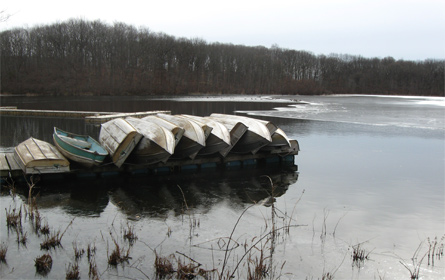
On a freezing Saturday in January, six troops of Boy Scouts camped out in cabins next to a silvery lake forming a skin of ice, surrounded by dense stands of bare trees as far as the eye could see. The boys, who had come from New York City and the surrounding suburbs to learn how to make a fire and use an ax while building lifelong values and friendships, might have been in a forest in the Catskills. The actual location: Staten Island.
They were spending the weekend at 143-acre Pouch Camp, the largest parcel within the Staten Island Greenbelt and one of the only privately owned ones. All together, the greenbelt preserves 2,800 contiguous acres of parks, natural areas and golf courses under city and state ownership in a teardrop-shaped swath of green at the island’s center. The camp is beloved by generations of Boy Scouts throughout the metropolitan region whose childhoods revolved around weekends and summers there, as well as by Staten Islanders who grew up exploring the adjacent woods, fishing in its Lake Ohrbach, and attending dances and parties at its picturesque lodge.
But now, the financially troubled Greater New York Councils, Boy Scouts of America, the owner of the camp, has announced it is considering putting the land up for sale. If funds can’t be found to save the camp, luxury housing could replace lean-tos, eliminating scout camping programs within New York City and diminishing the Greenbelt forever.
Funds for Land
For a number of years, the Greater New York Councils has been in discussions about selling a conservation easement (essentially the development rights) on the property to the city, state or an environmental group. Such a sale would preserve the landscape while allowing the scouts to retain ownership and continue its camping program. Press reports put the most recent asking price for an easement at $30 million. Talks appeared to stall, though, and just before Thanksgiving, the Boy Scout organization said that it was exploring the sale of all or part of the property.
Although land use issues are often contentious in Staten Island, politicians from both sides of the aisle, local scout volunteers, and environmental and civic groups have been working together to find a way to save the land and the camp program in the most difficult economic climate in decades. .
The Pouch Camp situation is a perfect example of why state legislatures, including New York's, have created dedicated accounts to provide a steady stream of funding for conservation and other environmental needs, advocates say. Although spending on conservation is minuscule compared to other areas, it is often perceived as expendable and so is among the first things cut by governments looking to save money.
In New York state, the Environmental Protection Fund, financed largely by a portion of the receipts from the real estate transfer tax, was created so there would be a stable source of money to preserve land and fund other environmental projects. In recent years, the state has used money from this source (and a now-depleted bond act) to preserve open space in Staten Island and elsewhere in the city. Pouch Camp is listed on the state’s Open Space Conservation Plan as a priority for preservation in New York City .
State legislation passed in 2007 called for increasing the fund to $300 million by 2010, and last year’s budget allocated $222 million, with $60 million for land conservation. But governors and legislators find it difficult to resist raiding the fund to balance the budget and have "borrowed" $500 million in recent years. Now, the state is facing an $8.2 billion deficit, and the governor wants to sweep more money from the fund for unrelated purposes; slash allocations from the fund by a third -- one of the largest cuts to any major program; and place a moratorium on all land conservation purchases.
 Lean-tos in the woods
Lean-tos in the woods
Over the years, the city has preserved much of the greenbelt as parkland, and Mayor Michael Bloomberg has staked his legacy on greening the city, setting aside capital dollars for parks under PlaNYC2030. In a recent letter to Parks Commissioner Adrian Benepe, New Yorkers for Parks, the citywide parks advocacy group, asked the parks department to incorporate the camp property into its system. But the city has its own fiscal difficulties and has reduced capital budgets by 30 percent. Benepe told the New York Times that it was highly unlikely that the parks department would be able to buy the property.
Nature's Last Stand
The Greenbelt is a link to Staten Island’s not-so-distant rural past, before the tsunami of development unleashed by the opening of the Verrazano Bridge in 1964. Efforts to create the linear park began in the 1960s, with the purchase of what is now High Rock Park and a years-long battle by civic and conservation groups to prevent Robert Moses from blasting a highway through the borough’s hilly wooded center.
There are now seven city parks in the Greenbelt, as well as parcels the state owns or protects through conservation easements. Thirty-five miles of hiking trails meander through its woods, meadows and wetlands. One of the largest natural areas in New York City, it supports a diversity of native flora and fauna, including 50 species of nesting birds as well as 150 species of birds that migrate through the city along the Atlantic flyway in the spring and fall.
Within the greenbelt, Pouch Camp is considered the crown jewel. While it is not open to the public (although fishing permits are issued and hikers can request permission to walk through), trails through the greenbelt run along its edge, overlooking the camp's native hardwood forest and understory dotted with glacial kettle ponds, streams and swamps. "In the spring, it is beautiful because of all the different wildflowers,” said Dominick D’Urso, who leads the annual 10-mile greenbelt hike for Protectors of Pine Oak Woods, the borough’s 30-year-old land conservation organization.
"It's the heart and soul and lungs of the greenbelt," said Kathleen Vorwick, president of the Greenbelt Conservancy, a nonprofit that partners with the parks department in operating and supporting the park. Just a ferry and bus ride from Manhattan, that part of the greenbelt is "the last remaining area of that size in New York City where people can be totally away from noise and light pollution," she said.
"It’s someplace that’s very, very special. You have to see it to believe it exists in New York City," said Staten Island Borough President James P. Molinaro.
The Cost of Development
Most of Pouch Camp is not suitable for housing, with its steep slopes, lake and numerous streams and wetlands. But building on even part of the property would fragment the native forest and put luxury housing in the wildest part of the greenbelt.
Development would fray the ecological fabric of parkland well beyond the camp's borders. Slicing the forest into smaller pieces and increasing the amount of "edge" would make the entire greenbelt less habitable for native animals that need larger areas of interior forest to survive. Construction, roads and houses, along with lawns and gardens, would give invasive species a foothold and affect the larger watershed: .Heavy rains and snowmelt would wash soil, pesticides and other pollutants into Lake Ohrbach, which floods into streams and wetlands in High Rock Park below and on down through Richmondtown and into Richmond Creek.
"The concept of this 2,800-acre greenbelt, mostly in a natural state, would just be destroyed. It would be cut into little boxes," said Vorwick. "There's a very small piece of God's creation here on central Staten Island, and it would be destroyed if any portion of Pouch Camp were to be developed."
To many Staten Islanders, especially people involved in scouting, closing the camp would be the biggest loss of all. The camp is heavily used -- both for summer camps and weekend activities year round -- by many of the 52,000 Boy Scouts in the metropolitan region as well as troops from other parts of the country who stay there while they explore New York City. There is also a summer YMCA day camp on the grounds.
"My fondest scouting memories from my childhood are all based around Camp Pouch," said Jim Falcone, the cubmaster at Pack 36 on Staten Island, whose father was also scoutmaster. "It gives kids a real sense of adventure to be out there. I was born and raised in Bensonhurst. My dad took us camping there and I didn’t even realize that it was just a stone's throw over the bridge. It's where my kids slept outside in a tent the first time. Every one of my sons caught their first fish in Lake Ohrbach."
Breaking with Tradition?
People involved in scouting on Staten Island say the sale of the camp would betray the Boy Scout's 100-year tradition of building skills, character and values in young men through camping, nature study and outdoor adventure and its goal of teaching youths to be good stewards of the environment. "Selling the camp goes against Boy Scout values," said Dominic R. DeRubbio, an Eagle Scout and public safety consultant who helped organize a rally attended by 1,500 people on a chilly December evening and a petition drive that has collected more than 10,000 signatures so far.
The proposed sale has increased scrutiny of the expenses of the Greater New York Councils, which has its offices in the Empire State Building. It has also renewed criticism of the Boy Scouts of America's corporate-style management and high salaries for a nonprofit.
Assemblymembers Michael Cusick and Louis Tobacco held a press conference in early February suggesting that the organization lower costs by moving its headquarters to Staten Island. According to the Staten Island Advance, financial filings show that in 2008 the organization paid $2 million for occupancy costs, much of it in rent.
"We have made drastic reductions, reduced staff by 40 percent, reduced office space by 60 percent, driving down operating costs dramatically," said William Kelly, spokesman for the Greater New York Councils. "We are looking at all of the assets to figure out the best way to remain relevant to scouts in New York City." He noted that the organization operates three camping facilities, including one upstate and one in Alpine, N.J., across the George Washington Bridge from the city, with Pouch being the smallest.
Elsewhere in the country, Boy Scout councils have been criticized for logging or selling off forested camps to developers in disregard for the environment, according to a scathing investigative report last year by Hearst newspapers. The Boy Scouts of America, which is celebrating its 100th anniversary this month, responded with a public letter saying, in part, "local executive boards have the duty to use all council assets in the best interests of scouting -- which might include the sale of properties," to support its mission of preparing young people "to make ethical and moral choices over their lifetimes."
Looking for a Savior
In terms of Pouch Camp, Kelly said that the Greater New York Councils has brought in the international commercial real estate firm Jones Lang LaSalle to figure out "the best way to use that property in the best interest of New York City kids."
"We want to have a conservation easement that preserves the ownership to the Greater New York Councils, with the primary purpose being scouting programs," he said. "If an easement isn't going to be worked out, other options include a full or partial sale."
Discussions of public ownership of Pouch Camp go back as far as 1985, as documents posted on the Save William H. Pouch Scout Camp website show.
Most recently, the Greater New York Councils had been in discussions with The Trust for Public Land, the national land conservation organization that helps negotiate land preservation deals with the ultimate goal of transferring the property to public ownership. In New York City, the organization has helped protect nearly 620 acres of open space, including Staten Island's Mt. Loretto in 2000.
Leslie Wright, director of the New York State program at The Trust for Public Land, said the group would "like to do everything we can that's reasonable to preserve" Pouch Camp. "It’s a beautiful piece of property. It has a huge natural resource value, both in terms of itself and how it links up with other protected properties," Wright said.
The Staten Island Advance reported on two proposals to save the camp -- a complicated land swap involving the adjacent Richmond County Country Club or using mitigation funding from the proposed expansion of the New York Container Terminal into Arlington Marsh on the North Shore -- but both face a number of objections.
Borough President Molinaro said, "We are researching every possibility of saving it in every possible way you can think of." He continued, "Every elected official on Staten Island, regardless of political philosophy or affiliation, is working together and knows it is a necessity to save Pouch Camp, and I am confident that we will save it."
In the meantime, environmental groups are lobbying to keep state funding for the environment, parks and land conservation. They argue that investing in the environment pays dividends in clean water and air, quality of life, public health and economic benefits and jobs in tourism, recreation, and natural resource management.
"Americans, and New Yorkers, understand that economic growth and conservation are mutually reinforcing goals," said Paul Hartman, director of government relations for The Nature Conservancy in New York, in testimony before a joint legislative hearing on Gov. David Paterson’s proposed budget. He cited recent polling by The Nature Conservancy showing that voters strongly support public investment in protecting natural areas, support that has held steady despite the economic downturn.
Advocates for conservation funding point out that the recession offers a rare opportunity to acquire lands important for watershed protection, wildlife and recreation. "Halting land purchases that protect public health and drinking water when prices are at their lowest and there are willing sellers is, at best, unwise," wrote Assemblymember Steve Englebright of Long Island, chair of the Assembly Committee on Tourism, Parks, Arts and Sports Development, in a letter published in the Albany Times Union.
"Parks even in New York City have always been the low man on the totem pole, I guess because people perceive them as discretionary," said Vorwick. “But to a lot of people they aren’t discretionary -- they are the only outlet you have for recreation. To spend millions of dollars fighting childhood obesity and then cut your parks budget makes no sense."
Staten Islanders have fought long and hard to preserve the swath of green in the middle of the island. In the current economic crisis, can the city or state can find a way to save the last, most crucial piece?
"If you lose it, you’re not getting this back, especially in New York City," Molinaro warned. "It’s irreplaceable."
Anne Schwartz, in charge of the parks topic page since its inception in 1999, is a journalist who specializes in environmental issues.
Pioneering E-Waste Bill Remains Stuck in Legal Limbo

In 2008, New York City enacted a pioneering electronics waste law, becoming the first city in the nation to do so. But the law never went into effect and now the city government and manufacturers are locked in a contentious legal battle over whether producers should take a lion's share of responsibility for collecting discarded electronics.
Before the law could go into effect last July, the Consumer Electronics Association and the Information Technology Industry Council and ITAC Systems, Inc. filed a lawsuit to block it. The New York City Law Department and the National Resources Defense Counci are defending the law.
Oral arguments have been postponed three times since the fall as the two sides try to negotiate a settlement. The case is being heard by Judge William H. Pauley of Federal Court for the Southern District of New York.
"The stakes are high on this," said Barbara Kyle, national coordinator for the Electronics Take Back Coalition. "If the plaintiffs prevail on this, it can call into question legislation on a whole range of products where states are holding manufacturers responsible." For the city -- where only 10 percent of discarded electronics are recycled -- a plaintiffs' victory would add to the growing list of environmental reforms that failed, stalled, or were drastically revised. Manufacturers fear that, if they lose, they will have to comply with a law that they say imposes unreasonable burdens and enormous costs.
Picking Up the Pieces
The proposed law requires manufacturers to plan for and pay the full cost of collecting discarded electronics. Manufacturers must submit an e-waste plan detailing "convenient" methods by which consumers can return items. Manufacturers can be penalized $1,000 for each day the plan is past due, while city residents can be fined $100 for each improperly disposed item. The law covers computers, televisions, computer printers, and i-Pods, but not cell phones or household appliances.
The most controversial provision of the city's plan requires that manufacturers collect items over 15 pounds directly from consumers' residences. Items under 15 pounds can be mailed or dropped off at a collection point. The direct collection requirement -- which no state has -- was not part of the City Council legislation but a regulation from the Department of Sanitation, which governs how the law is administered.
Other highly contested elements of the law include an orphan waste rule, which requires manufacturers to take back certain electronics made by producers that no longer exist, and a performance standard, which sets minimums on how much must be collected.
The plaintiffs point out that Mayor Michael Bloomberg vetoed the performance standards component of the e-waste plan, which City Council passed in a separate bill in 2008. But the mayor did sign the bill containing all other aspect of the e-waste recycling plan, and the council later overrode the mayor's veto of the performance standard.
A Mountain of E-Waste
This law was prompted by an exponential growth in electronic waste and a growing awareness of its dangers.
Junked electronics are the fastest growing kind of waste in the U.S. Americans, who own over 2 billion pieces of high-tech electronics, discard over 3 million tons of them each year according to a 2007 report by the Environmental Protection Agency. Public Advocate Bill De Blasio, a longstanding proponent of the bill during his tenure in City Council, has written that the city spends over $6.4 million a year to export the nearly 30,000 tons of e-waste that travel through its waste stream.
Electronics contain lead, cadmium, mercury, all of which are dangerous when released into the environment, according to the city's brief. Such toxins can leach into groundwater from improperly contained landfills or be released into the air when crushed by compactors or burned in incinerators.
Plaintiffs say the law is unconstitutional, alleging, among other claims, that it would impede interstate commerce and violate the equal protection clause and due process.
But their essential problem with the law is cost. They claim that the city has "devised a program this is in order of magnitude more costly than any other E-waste program in the world."
"The city’s program costs six to eight times more than any other state program, and these excessive costs will be passed back to consumers in the form of higher prices," said Parker Brugge, vice president of environmental affairs for the Consumer Electronics Association. Brugge said that the association estimates the proposed law would cost manufacturers about $200 million annually.
Paying for Pick-up
Direct collection alone, according to the Consumer Electronics Association and other plaintiffs, "will cost manufacturers approximately $121, and potentially more, per pick-up from a city residence." James Slaughter, attorney for the plaintiffs, said direct collection is particularly expensive because whenever a customer calls to dispose an electronic item, "we have to come get it."
But the city and the Natural Resources Defense Council dispute the plaintiffs' cost estimates. Kate Sinding, attorney for the Natural Resources Defense Council, said that the plaintiffs' estimates are based on the most inconvenient ways of complying with the law. She said that in reality, "competition and the drive for efficiency would lead manufacturers to find the least costly option for compliance."
In support of this position, Jay Shepherd, a policy advisor from Washington State Department of Ecology, filed written testimony indicating that companies in his state have pooled resources and worked together to come up with cost effective ways of complying the state's e-waste laws.
The city and NRDC also indicate that direct collection is not the expensive, come and get it kind of rule the plaintiffs make it to be. And on the law's face, this is true. The regulation states that for items over 15 pounds, "convenient collection from a resident shall mean direct collection from a resident's home." Slaughter said this implies an on-demand pickup, but Sinding said the regulation is flexible, allowing companies to come out to collect every few weeks or so. The plaintiffs "interpret the direct collection requirement as being an on demand pickup requirement, but there is absolutely nothing in the regulations, or the law, that would compel anything like that," Sinding said.
The city also indicates that direct collection is "narrowly tailored" to New York City, where many residents do not own cars. Without cars, people would have to lug heavy items on mass transit.
Jennifer Carela, a Chelsea resident who hauls her out-of-use electronics on the subway to city-run collection programs, likes the proposed law for its convenience to city residents. "I've used the electronic drop off sites but it's always a production to plan your schedule around them, and I don't think most people care enough to lug their keyboards, CPUs, and TVs downtown to have them disposed of properly," she said.
Sharing the Burden?
The manufacturers also complain that the law shifts all responsibility to them, and that is what makes it particularly unfair. In California, consumers pay a fee at the time of sale. "There needs to be a shared responsibility among various stakeholders," Brugge said.
However, the city argues in its brief that one rationale for increasing manufacturer responsibility is that "requiring manufacturers to internalize the costs of recycling covered electronic equipment gives those manufacturers an incentive to reduce or remove toxic materials from products at the time that the products are first manufactured." Eighteen of the nineteen states with e-waste laws have enacted legislation that shifts burdens toward the producer, and such laws have come to be known as producer responsibility laws.
Elizabeth Grossman, whose 2006 book High Tech Trash chronicled how severely production and disposal of electronics affect the environment, said, "If you require a company to take physical and fiscal responsibility of their obsolete products, they've got a whole lot more incentive to make them easier to recycle and last longer."
Nili Belkin, a Park Slope resident, would like to see that happen. She recently got rid of her computer printer merely because the small roller that feeds through paper would have cost her nearly as much as a new printer. She hopes the law will encourage longer lasting, less disposable products.
City, State or Federal?
For now, only 19 states regulate e-waste. The number is likely to grow, according to experts.
The industry has said this matter should not be left to cities and states.
"We believe that electronics recycling is a national issue that requires a federal solution" said Brugge. "It is not feasible for manufacturers to comply with a unique recycling scheme for every municipality in the country."
Kyle noted, though, that what she considers a sound, comprehensive, proposal at the federal level never got off the ground, leaving states to take things in their own hands.
"This is really a fight about state's rights and city's rights," said Kyle.
Talking Trash

This story was done through a partnership between The Huffington Post's Eyes and Ears citizen journalism program and Gotham Gazette. Gotham Gazette reporter Courtney Gross wrote the piece using stories from New Yorkers gathered through The Huffington Post and Gotham Gazette. Sign up here to join Huffington Post's citizen journalism team covering New York to be part of more of these stories.
Neat freaks, beware of Brownsville, steer clear of Morrisania and forget about Chinatown.
These are some of the neighborhoods that received the worst ratings for street or sidewalk cleanliness, according to data from the Bloomberg administration's Office of Operations.
To avoid litter-strewn streets stick to Bayside, Queens or the South Shore of Staten Island.
To some of you, these characterizations may come as no surprise.
Gotham Gazette and The Huffington Post asked you to send in photos and tales of nasty neighborhood trash. Many of you said Bushwick, the Bronx and areas of Upper Manhattan were centers of grit and grime.
A review of cleanliness scorecards for the last year and a half corroborated some of your claims. We found poorer neighborhoods afflicted with other environmental challenges were on the lower rung of neighborhood neatness. More affluent areas of the city were more likely to be trash free.
And you've noticed.
"I live in Spanish Harlem and I am always shocked at the difference in the streets there and those of the Upper East Side. Every morning I get coffee at Starbucks in the UES and see sanitation workers cleaning the streets daily. I only see them about once a week in my neighborhood," wrote one reader, who goes by tiffanykapri. The reader punctuated her message with an unhappy face.
About 93 percent of the streets in East Harlem were considered "acceptably clean" between July 2008 and December 2009. On the Upper East Side, more than 98 percent were.
This tale of trash festers all over the city.
Outer Borough Bust
There is the inescapable dog droppings ("It seems that no one cleans up after their dogs," one reader complained).
Or the constant search for a trashcan: "I live in Bushwick, Brooklyn and it is DIRTY! Despite numerous calls to 311 from all my friends and me to have trash cans placed in our neighborhood, we still only have one, which only just appeared about six months ago after years of begging for trash cans," another reader lamented.
One Mott Haven resident, who goes by missyfoosy, complained streets in the South Bronx have more than trash troubles:
"I lived right on Bruckner Blvd, considered the first block when you enter the Bronx from Manhattan. On the waterfront is the NYC Waste Transfer station that just renewed its lease for 99 years; to the north is I-87, which wafts truck exhaust and car fumes right into the neighborhood. Rodent infestations in the abandoned buildings make it impossible to walk the sidewalks at night; they are overrun. There is never enough trash bins nor the collection of that trash."
The community boards in the South Bronx have some of the dirtiest sidewalks in the city, according to data, collected monthly, from the mayor's Office of Operations. The only ones worse are in Bedford-Stuyvesant and Brownsville in Brooklyn.
Bayside, the South Shore of Staten Island and the Upper East Side boasted the cleanest sidewalks.
Street neatness has a similar story. The Bronx's Melrose and Morrisania and Brooklyn's Borough Park scored the nastiest ratings. (For a look at your community board, check out our breakdown.) Again, the South Shore of Staten Island was kept the cleanest.
Community leaders have plenty of explanations as to why their neighborhood may fall on the gritty or gleaming side of the city.
"People are passionate about their communities and people take pride in their community," said Jerry Iannece, the chair of Bayside's community board. "You see them sweeping their streets."
In other, more pungent neighborhoods, leaders say their litter problem could be ameliorated if they had more public garbage cans and if the sanitation department swung by more often. But, said Brooklyn's Community Board 16 District Manager Viola D. Greene-Walker, the problem goes beyond that.
"People, for whatever their reason, would rather instead of disposing their litter in their buildings as they are leaving, just take it outside and put it in front of the building on the sidewalk," said Greene-Walker, whose district includes Brownsville. "'Somebody is going to take care of it.' (It's) that attitude."
The city's Department of Sanitation says it treats every neighborhood equally.
"The Department of Sanitation makes every effort to keep New York City clean for all New Yorkers," sanitation department Spokesperson Kathy Dawkins said in an e-mailed statement.
Gotham Gazette requested statistics from the Department of Sanitation on the number of litter baskets per community district as well as the frequency of pick up. The department did not provide the information by the time of publication.
A Long Way from the 80s
Despite the disparity, New York has seen much worse. Since 1975 the city has been scoring the cleanliness of its streets, and in 1980, 53 percent of them were considered "acceptably clean" citywide -- an all time low.
Last fiscal year, according to the Bloomberg administration, 95.8 percent of streets were deemed "acceptably clean" -- the highest ever.
Even in Bushwick, which one reader called the "neglected underside of Brooklyn," community leaders say there has been a vast improvement.
"If you would have seen it the way it was when it was literally all lots," said Willie Morales, the community associate for Community Board 4 in Bushwick. "Compared to now, it is immaculate."
But that may not be the case for long.
This fiscal year, which started in July and goes to June, the Department of Sanitation has seen successive budget cuts and reconfigured trash routes to make better use of its time and money.
Since those cuts were enacted in July, almost 30 percent of community boards saw a decrease in their street cleanliness ratings.
"Current economic conditions had an impact on the city’s adopted budget," said Dawkins in a statement. "Litter basket collection is a priority and in spite of a painful $80 million budget reduction in fiscal year 2010, we will devote all available resources to servicing baskets in high-density, heavily trafficked areas as often as possible."
This year the department could face an even sharper ax. Cuts to the city in Governor David Paterson's proposed state budget threaten the city's recycling program and its regular refuse pickup. If the governor's plan goes through, the mayor has warned the city would do away with all street cleaning and all public litter baskets.
Those actions would put every community's cleanliness ratings down into the dumps.
Targeted Cuts, Improved Productivity Could Save City Services
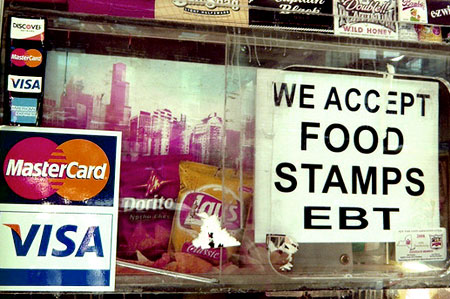
In the short term, New York City’s budget prospects for fiscal year 2011 are much brighter than they seemed last summer. A review of recent reports from city and state fiscal monitors confirms this. At the same time, social and economic prospects remain bleak, both in the short and long term.
A review of recent reports from city and state fiscal monitors confirms both the rosier fiscal outlook and the grim consequences of the national recession. In this context, Mayor Michael Bloomberg’s recent budget strategy -- successive waves of across-the-board cuts in agency spending -- looks more and more unresponsive to the realities of life in the city today.
The administration quietly requested the next round of cuts in a memo to city agency heads in November, and the reductions are likely to be formalized in January's preliminary budget for fiscal year 2011. So now is a good time for the mayor, the City Council and advocates to look at alternative fiscal strategies, such as targeted budget cuts, progressive revenue options and city management practices. The City Comptroller’s November Comprehensive Annual Financial Report for FY 2009, for instance, underscores the city's short-term fiscal soundness, yet raises several questions about how the city is managing its programs, especially contracted services.
The City’s Fiscal Condition
Thanks to huge Wall Street profits -- nearly $50 billion in the first three quarters of calendar 2009 -- city tax revenues in the current fiscal year, as noted in the mayor’s cryptic November budget modification, are nearly $700 million higher than anticipated. For instance, the estimate of personal income tax revenues jumped by nearly $300 million to $6.3 billion.
December reports suggest tax revenues will be even higher than that this year and in 2011-2013 as well. The Independent Budget Office's December Fiscal Outlook, for example, projects revenues will be nearly $400 million higher this year and $958 million higher in 2011 than the mayor’s November estimates.
Overall revenue has grown in spite of the extreme volatility in several major taxes. The State Financial Control Board’s December report on the same modification reviews the rapid changes in three of the city’s major taxes: the bank tax and the two property transaction taxes (mortgage recording and property transfer taxes).
The bank tax, for instance, peaked at $1.2 billion in revenues in 2007, fell by 48 percent in 2008, then bounced back in 2009 with a 75 percent spurt, yet is projected to fall back to $674 million in 2010. The two property transaction taxes peaked in 2007 at a total of $3.3 billion. Revenues then began heading down and are projected to this year to a (relatively speaking) mere $1 billion.
In spite of these fluctuations, the comptroller’s November report points out the basic soundness of the city’s finances. The 2009 budget year marked the 29th year in a row that the city ended its fiscal year with a balanced budget. The city’s credit ratings remain solid and, for the fifth consecutive year, the city did not have to issue short-term notes to manage cash flow. And, although the fiscal monitors worry about long-term budget gaps (the state comptroller’s December report on the November modification projects a worst-case scenario of a $7.6 billion budget gap in 2012), there seems to be no alarm about the short term.
The Great Divide
The way the city balances the budget is another matter. The current economic and social news is terrible. While job losses in the city are now projected to peak at 220,000 this calendar year -- 108,000 job fewer losses than projected last June -- the reality is that the city’s unemployment rate almost doubled between July 2008 and September 2009, from 5.4 percent to 10.3 percent.
The state comptroller’s report lists several consequences of the recession that the mayor and City Council will need to deal with in the 2011 budget. Between October 2008 and October 2009:
* Medicaid recipients increased by 7.4 percent, to 2,809,642.
* The number of families in shelters increased by 8 percent to 10,396.
* Public assistance recipients increased by 4 percent to 355,459
* Food stamp recipients increased by 22 percent to 1.6 million.
The social/economic contrasts in New York City could not be more stark: On one hand, a relative handful of financial firms -- and their most fortunate employees -- enjoy $50 billion of profits; on the other hand, one third of New York city residents now qualify for Medicaid, a clear sign of the depth of need in the city at the moment.
The Budget Cuts
Yet at this critical time, the mayor has continued to focus almost exclusively on cutting agencies across the board, including the city’s extensive network of health and social services -- most of them run by contracted non-profit community agencies with little political clout.
The Financial Control Board's December report lays out the agency impacts of the mayor’s basic budget-gap strategy from January 2008 through the June 2009 Adopted Budget. The cumulative impact of the cuts -- or "savings" as the report calls them -- is just under $3 billion this fiscal year. Anticipated savings in the next three years average $3.36 billion a year. Projected cuts in health and welfare agencies alone average $422 million a year from 2010 through 2013.
The nearly $3 billion in savings this year is actually $776 million less than what was originally proposed. This is due to budget restorations, a hopeful sign that the City Council and others have pushed back on some of the mayor’s proposed cuts. (The outer-year savings assume $202 million in restorations each year.)
The $3 billion, however, does not include cuts proposed by the mayor in his November memo to agency heads: an additional $550 million this fiscal year and $1.2 billion for 2011. The new cuts, if implemented, would make for a total cut of $3.55 billion this year and $4.6 billion for 2011.
The mayor has generally shunned going line by line looking for cuts, preferring to take an across the board approach. Most agencies had to slash 4 percent in 2010 and 8 percent for 2011. Education cuts are to be 1.5 percent for 2010 and 4 percent for 2011.
The state comptroller's December report notes how even the smaller cuts play out in the city's biggest agency, the Department of Education: "Average class sizes have already begun to rise as a result of cuts in educational spending." The proposed cuts in the November memo would be $113.2 million in 2010 and $316.8 million in 2011.
The report also notes, "The state’s fiscal crisis puts at risk planned increases in state education aid that were part of the settlement of the Campaign for Fiscal Equity litigation on school funding. However, the report continues, the city's November modification assumes that state education aid will to the city will see a cumulative increase of $2.6 billion over the next three years.
Another Way to Cut
The mayor’s January 2010 Preliminary Budget for fiscal 2011 will mark the first time Bloomberg has publicly dealt with the city’s fiscal strategy since last June. Given the good revenue news and the city's sound fiscal condition in the short run, the time seems ripe to slow down the agency cuts and deal with the social and economic consequences of the recession. That would seem to require some more creative budget-gap strategies.
Last year's one big alternative to agency cuts was various changes to the city sales tax, most regressively a 12.5 percent increase in the sales tax rate, to 4.5 percent. This would seem to preclude further sales tax increases in the near future.
What’s left to consider?
For several years, the mayor has ignored one major option, the personal income tax. The city's top rate for high-earners, 3.65 percent, is well below the rates of up to 4.45 percent instituted in recent times of fiscal and social/economic stress. Keeping it at that lower level seems an odd choice at a time of a Wall Street boom and increasing inequality in household resources in the city.
Getting More Bang for the Buck
Another strategy would increase productivity – saving money through better management. The City Comptroller’s November Comprehensive Annual Financial Report in its summaries of the office's key audits and contract administration studies, identified several areas where significant savings seem possible.
For instance, the comptroller’s analysis of the city’s $925 million occupational training/employment programs "found that the city's poor coordination of this system has compromised its efficiency, accountability, and effectiveness." Given the city's 10.3 percent unemployment rate, this finding is particularly disturbing.
In another study, the comptroller's office found monitoring problems in the $2 billion Personal Care Program run by the Human Resources Administration through 93 contracts with private personal care agencies. The office identified some $203 million in outstanding overpayments to those agencies for lack of timely oversight.
The most useful information in the comptroller’s Financial Report may be its extensive list of problems identified in city contracting. The comptroller's office registers all contracts and franchise agreements, and as part of that process often returns contracts to agencies for clarification and/or revision. Sometimes it simply refuses to register a contract.
Of the 20 examples of problematic contracts listed in this year’s annual report, six involve the Department of Education contract. A $22 million the Department of Education contract with the Princeton Review was returned for a variety of reasons, including questions of "business integrity." The department did not re-submit the contract.
An $18 million contract with Verizon Wireless was returned (and not re-submitted) because of questions about lack of competitive bidding. In April 2009, the comptroller’s office "expressed concern to DOE with regard to troubling patterns of mismanagement surrounding DOE's expenditures."
Cases such as these indicate management of billions of dollars in city contracts should be a central part of a comprehensive review by the mayor and City Council.
Because of the city's sound fiscal condition and the prospects of more revenue than anticipated, the city has an opportunity to better serve the interests of those millions of city residents in distress that residents feared as recently as last summer. Agency cuts that are more sensitively targeted, better management of city programs, and serious consideration of a more progressive tax structure are three ways that the city budget could move beyond automatic-pilot agency cuts and better promote its social and economic as well as fiscal health.
Glenn Pasanen, who teaches political science at Lehman College, has been in charge of Gotham Gazette's finance topic page since 2001.
Stated Meeting: Green Building Bills Approved by the Council
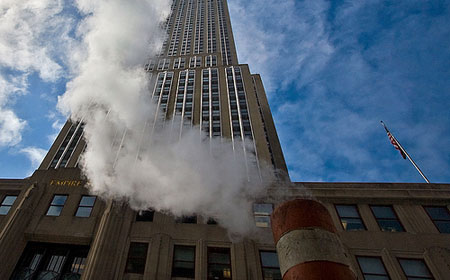
The City Council took aim at the city's largest polluter Wednesday by requiring property owners audit energy usage and make maintenance overhauls to cut back on carbon emissions.
Council Speaker Christine Quinn said the package of legislation would set a standard nationwide. Buildings of more than 50,000 square feet will have to upgrade their lighting by 2025, and those same buildings will now have to conduct energy audits every 10 years.
The city's existing buildings account for 80 percent of the city's carbon footprint and represent $15 billion a year in energy costs.
While environmental advocates and city officials championed the green-buildings package, some critics question the effectiveness of one piece of legislation (Intro 967-A), which originally required large buildings adopt the recommendations of the now-required energy efficiency audits. The version the City Council approved yesterday by a vote of 41 to 5 would make those recommendations voluntary.
Greening Buildings
Some charge the council backed away from the tougher legislation because of lobbying from the city's business industry, which called the bill too expensive to implement in a floundering economy. Quinn argued yesterday that the council decided not to push for mandatory retrofitting because it would require a significant capital investment by landlords that would, in turn, trigger rent increases.
Even without the mandatory retrofitting, officials have acknowledged that the entire package of legislation could be costly for property owners. But they argue overall it is a net positive.
"Once these changes are put in place very quickly the building will not only make back whatever they have put in, they will actually begin to go beyond that and save," said Quinn.
While the council abandoned the requirement for retrofitting, officials did say the city would strive to set an example. The bill requires the city retrofit its buildings if audits show it would result in savings on energy bills in seven years.
The council is also requiring owners of large buildings to conduct smaller energy-efficiency improvements, which would have less of an impact on their pockets. Before every audit is submitted to the Buildings Department, buildings of more than 50,000 square feet will have to be retro-commissioned, which is when maintenance and low-cost performance improvements are made to increase a building's energy efficiency.
Overall, the entire legislative package, said Quinn, would reduce the city's carbon footprint by almost 5 percent. Quinn also said the bills would create 18,000 green jobs.
Environmental advocates have praised the package.
"You come into a negotiation asking for more than what you were going to get," said Dan Hendrick of the New York League of Conservation Voters. "Even with all the amendments, it's still groundbreaking."
In addition to the auditing bill, the council also passed legislation (Intro 973-A) by a vote of 44 to 2 that requires buildings of more than 50,000 square feet to make lighting upgrades by 2025, including the use of sensors and more efficient light fixtures. It would also require the installation of submeters, and landlords would have to provide tenants with monthly breakdowns of their electricity consumption.
In addition, the council unanimously approved a new energy code (Intro 564-A) that requires equipment installed during renovations to meet efficiency standards, and it approved legislation (Intro 476-A) that requires large and city-owned buildings to monitor their energy and water consumption and report it to the Department of Finance. That data will eventually be made public.
Fresh Foods
In addition to its green-buildings package, the council approved a zoning and financial incentive program to spur the construction of supermarkets in neighborhoods that have a drought of fresh food. Otherwise known as the Food Retail Expansion to Support Health, the program targets neighborhoods in the South Bronx, Upper Manhattan, Central Brooklyn and Downtown Jamaica.
Its incentives include: allowing one additional square foot of residential floor area for every square foot of a fresh food store up to 20,000 square feet, allowing grocery stores of 30,000 square feet and below to locate in light manufacturing areas, and reducing the parking requirements for grocery stores in this area.
Stated Meeting: Green Building Bills Approved by the Council

The City Council took aim at the city's largest polluter Wednesday by requiring property owners audit energy usage and make maintenance overhauls to cut back on carbon emissions.
Council Speaker Christine Quinn said the package of legislation would set a standard nationwide. Buildings of more than 50,000 square feet will have to upgrade their lighting by 2025, and those same buildings will now have to conduct energy audits every 10 years.
The city's existing buildings account for 80 percent of the city's carbon footprint and represent $15 billion a year in energy costs.
While environmental advocates and city officials championed the green-buildings package, some critics question the effectiveness of one piece of legislation (Intro 967-A), which originally required large buildings adopt the recommendations of the now-required energy efficiency audits. The version the City Council approved yesterday by a vote of 41 to 5 would make those recommendations voluntary.
Greening Buildings
Some charge the council backed away from the tougher legislation because of lobbying from the city's business industry, which called the bill too expensive to implement in a floundering economy. Quinn argued yesterday that the council decided not to push for mandatory retrofitting because it would require a significant capital investment by landlords that would, in turn, trigger rent increases.
Even without the mandatory retrofitting, officials have acknowledged that the entire package of legislation could be costly for property owners. But they argue overall it is a net positive.
"Once these changes are put in place very quickly the building will not only make back whatever they have put in, they will actually begin to go beyond that and save," said Quinn.
While the council abandoned the requirement for retrofitting, officials did say the city would strive to set an example. The bill requires the city retrofit its buildings if audits show it would result in savings on energy bills in seven years.
The council is also requiring owners of large buildings to conduct smaller energy-efficiency improvements, which would have less of an impact on their pockets. Before every audit is submitted to the Buildings Department, buildings of more than 50,000 square feet will have to be retro-commissioned, which is when maintenance and low-cost performance improvements are made to increase a building's energy efficiency.
Overall, the entire legislative package, said Quinn, would reduce the city's carbon footprint by almost 5 percent. Quinn also said the bills would create 18,000 green jobs.
Environmental advocates have praised the package.
"You come into a negotiation asking for more than what you were going to get," said Dan Hendrick of the New York League of Conservation Voters. "Even with all the amendments, it's still groundbreaking."
In addition to the auditing bill, the council also passed legislation (Intro 973-A) by a vote of 44 to 2 that requires buildings of more than 50,000 square feet to make lighting upgrades by 2025, including the use of sensors and more efficient light fixtures. It would also require the installation of submeters, and landlords would have to provide tenants with monthly breakdowns of their electricity consumption.
In addition, the council unanimously approved a new energy code (Intro 564-A) that requires equipment installed during renovations to meet efficiency standards, and it approved legislation (Intro 476-A) that requires large and city-owned buildings to monitor their energy and water consumption and report it to the Department of Finance. That data will eventually be made public.
Fresh Foods
In addition to its green-buildings package, the council approved a zoning and financial incentive program to spur the construction of supermarkets in neighborhoods that have a drought of fresh food. Otherwise known as the Food Retail Expansion to Support Health, the program targets neighborhoods in the South Bronx, Upper Manhattan, Central Brooklyn and Downtown Jamaica.
Its incentives include: allowing one additional square foot of residential floor area for every square foot of a fresh food store up to 20,000 square feet, allowing grocery stores of 30,000 square feet and below to locate in light manufacturing areas, and reducing the parking requirements for grocery stores in this area.
Moving the City Along the Road to Sustainability
On Earth Day 2007, Mayor Michael Bloomberg announced PlaNYC 2030 -- a long-term vision for environmental sustainability for New York City. Unlike many other vision documents that are long on rhetoric and short on details, PlaNYC included more than 100 quantifiable strategies to hold Bloomberg and future administrations accountable on a wide range of environmental, economic and quality of life metrics.
By combining long-term vision with short-term quantifiable goals, PlaNYC 2030 changed the environmental debate in the city. PlaNYC represented a major new undertaking for the Bloomberg administration, which had focused on other issues during its first term. PlaNYC reframed the environment as a major priority for the mayor. It cast environmental sustainability as a critical component of how Bloomberg and his successors will meet the needs of an estimated one million additional New Yorkers who are projected to live in the city by 2030.
As an initial step, a new Office of Long-Term Planning and Sustainability was created to oversee the implementation of PlaNYC 2030. This office has been releasing implementation reports that provide a good overview of the mayor’s record on these issues so far. They and other materials are available here.
The mayor’s record on three key environmental issues is summarized below.
Air Quality
Given the millions of people who live, work, drive, use electricity and make things here, plus the tons of pollution that blow into New York City from upwind power plants in other states, air pollution is an unfortunate byproduct of life in the city. In fact, our city has never met -- and still does not meet -- the federal health standards for particulate matter (soot) or ozone (smog). In addition, thanks to the siting of commercial truck routes and bus depots, historically under-enforced anti-idling laws, and old boilers burning extremely dirty heating oil in many buildings, residents of low-income communities and communities of color breathe especially high levels of pollution.
In PlaNYC 2030, the Bloomberg administration vowed to "achieve the cleanest air quality of any big city in America." Recognizing the need to reduce community-level exposure to air pollution, PlaNYC2030 took aim at the high pollution exposures experienced throughout Hunts Point, Harlem and other low-income communities and communities of color. This approach was a logical follow-up to the focus on addressing inequities in the siting of waste facilities in the Solid Waste Management Plan, adoptedin 2006.
Some of the highlights of the mayor’s record on air quality include:
- To protect the city’s school children, Bloomberg worked with the City Council to create legislation, signed earlier this month, to retire old school buses and require filters to reduce the amount of pollution inside school buses, following similar new laws to reduce emissions from construction equipment, transit buses and other diesel engines used for city business that he signed in 2003, 2005 and 2007.
- To reduce pollution and increase efficiency in the city’s highest mileage vehicles, the mayor worked with Councilman David Yassky and others to craft legislation to convert the city’s yellow taxis to clean and efficient hybrid-electric models. When litigation stopped the implementation of the mayor’s original taxi program, he created a set of incentives that has led to a significant increase in the number of hybrid taxis -- today, 21 percent of the city’s yellow taxis are hybrids.
- To reduce emissions in neighborhoods plagued by heavy truck traffic, the city partnered with the state Department of Environmental Conservation to create better enforcement of anti-idling laws along heavy truck routes, especially in environmental justice communities.
- To reduce pollution from critical -- but highly polluting boats -- the Staten Island Ferry and several private ferries are using cleaner fuels and advanced pollution control systems, eliminating more than 300 tons of smog-forming gases every year.
- To reduce emissions around schools, the Department of Education has installed new boilers to replace extremely old and dirty boilers in several dozen schools.
Climate Change
Probably no issue evokes the old slogan, "Think Globally, Act Locally" more than climate change. The impacts of climate change—including hotter temperatures, rising sea levels and increased precipitation—are as much a local issue for New York City as they are a global issue for the nation and the world.
In PlaNYC2030, the Bloomberg administration aims to reduce global warming emissions by more than 30 percent by 2030 (last year, these emissions dropped by 3.5 percent in the city). By that time, the city projects that 85 percent of our energy consumption will come from buildings that already exist today. Thus, the administration has focused on investments that will make our existing buildings more energy-efficient.
The list of climate initiatives contains large items and small, as the following list shows:
- The city has been investing approximately $80 million per year to make existing government buildings more energy-efficient -- and has launched more than 224 energy efficiency projects on government buildings.
- The city Energy Planning Board was launched to coordinate planning among a wide range of city and state agencies to meet the city’s energy supply and demand needs.
- Bloomberg and former Vice President Al Gore launched an NYC Service initiative to organize volunteers to coat rooftops with reflective coating to reduce cooling costs and greenhouse gas emissions.
- The city committed to investing $25 million in energy efficiency improvements in the Castle Hill Houses in the Bronx.
- The Departments of Transportation and Parks and Recreation are collaborating on a pilot program to test high-efficiency, LED lights in parks and on roadways. Right now, the lights are easiest seen in Central Park from East 67th to East 72nd Street, but the city plans to expand the program.
Plus, many of the air quality and transportation initiatives will contribute to the climate goals. For example, those hybrid-electric taxis will cut fuel costs and climate pollution from the city’s highest mileage vehicles -- and all of the new bike lanes will help New Yorkers leave their cars at home, cutting congestion and climate pollution even more.
Transportation
In 2008, the mayor’s proposal to use congestion pricing to fight traffic and help fund the Metropolitan Transportation Authority dominated the transportation agenda of the city and state. When the plan hit a roadblock in Albany (after passing the City Council), attention turned to efforts that could improve transportation in the city without requiring the state legislature's approval.
Today, New Yorkers are resting in pedestrian plazas formerly reserved for honking cars and riding to work on dozens of new bike lanes. Work is progressing on "Select Bus Service," a new style of bus service that is providing a faster, more convenient bus commute along Fordham Road in the Bronx and that is slated to be expanded throughout the City over the course of the coming decade. Perhaps most important, the city’s Department of Transportation is being revitalized and reshaped by Commissioner Janette Sadik-Khan from its traditional focus on moving cars into an agency of multi-modal mobility advocates.
Here are some highlights:
- NYC Transit and the city are implementing a plan to convert five bus corridors to Select Bus Service by 2014 (besides the existing Fordham Road line, Nostrand Avenue, First and Second Avenues, Hylan Boulevard and 34th Streetare all slated for Select Bus Service). Select Bus Service is the New York version of the Bus Rapid Transit systems being developed throughout Latin America and Asia. These systems offer many attributes of subways (e.g., paying before you board, longer distances between stops), yet are faster and less expensive to implement because they operate on the roads. The expansion of Select Bus Service is a tribute to the success of the first pilot project on Fordham Road in the Bronx -- which reduced travel times by 19 percent while carrying 5,000 more riders per day. The city and NYC Transit are discussing a second phase of projects that will identify another eight to ten corridors for Select Bus Service by 2020.
- More than 200 miles of bike lanes have been installed in all five boroughs in the last three years. This has almost doubled the number of bike lane miles in the city, and has raised the visibility and safety of bikers. Add in a new bill to allow bike commuters to bring their bikes into their workplaces upon a tenant’s request, another bill to require large parking facilities to offer spaces to bicycles, more than 6,100 bike racks, 20 sheltered bike parking structures, and the result is a city that is becoming more bike-friendly every day. As a result, more and more people are biking to work and school -- the Department of Transportation estimates that bike commuting has grown 45 percent since 2006.
- More on the fun side of transportation: Green Light for Midtown, otherwise known as "closing Broadway to cars" is revising the way New Yorkers look at our streetscapes. In particular, the pedestrian plazas in Herald Square and Times Square have become de rigueur stops for midtown workers, residents and visitors at lunchtime, after work and late into the night. And car-free days on Manhattan’s Park and Fourth Avenues have created new energy and vibrancy along these promenades on many otherwise-sleepy summer weekends.
After two and a half years, the progress on PlaNYC’s key air pollution, transportation, and climate change initiatives is clear. On other critical environmental issues, the path toward greater sustainability in the coming decade has been laid out: More than 250,000 trees have been planted with a goal of one million new trees, an Office of Environmental Remediation has been created to clean up brownfields that don’t qualify as federal Superfund sites, plans to clean up pollution from dirty home heating oil are being developed, and a package of bills to require that large buildings improve their energy efficiency awaits action by the City Council. While there is still work to be done, the city has embarked on a strong path toward a more sustainable future.
Rich Kassel is a longtime environmental advocate on air, energy and transportation issues in New York City.
Switch It On!
In the last few days, we have seen Climate Week come and go, Mayor Michael Bloomberg tout painting city roofs white and California propose to cut the electricity consumption of your plasma TV by a third.
Energy efficiency is on everyone's mind, including ours.
That's why we have turned a spotlight on New York City's electricity future with Switch -- the final game in our series funded by the John S. and James L. Knight Foundation. A matching game similar to Concentration or Memory, Switch lets you solve New York City's energy crisis.
Between 2005 and 2030, the city will have to come up with about 22 million additional megawatt hours annually to meet our growing electricity demand, according to the Bloomberg administration's sustainability plan, PlaNYC 2030.
In Switch, we ask you how the city should do it. Turn out the lights? Build an offshore wind farm? What about nuclear power?
Switch gives you scores of options. Play again and again and see what conservation policies or generation proposals can close our electricity gap.
And for a sneak peek of the proposals included in Switch see our glossary below.
GENERATION OPTIONS
Solar Panels for City Buildings
Picture City Hall decked out in solar panels. It could happen. According to a 2006 study by the City University of New York, the city gets hit with twice the amount of solar energy we need to run it. But solar can cost more than four times as much as other renewable options. Despite that, the city has started to harness the sun, with 65 percent of solar energy in the city coming from panels on public buildings, according to CUNY.
Solar Powered Apartments
New York may not seem sunny, but solar panels on every inch of residential rooftop that could host them would create more than twice the amount of electricity we need to meet the demand of 2030. But property owners might balk at installation costs -- $4 a watt by some estimates. In response, the state offers financial incentives that could cover 40 to 70 percent of the installation costs. More recently, a City Council member has proposed solar zones to encourage neighbors to join together to share the expense.
Wind on Fresh Kills
From garbage dump to wind farm? Borough President James Molinaro wants to put seven 400-foot wind turbines on Staten Island's Fresh Kills, the landfill turned park. The turbines could produce enough electricity to power 5,000 homes. That kind of small-scale wind farm, according to Columbia University, could cost around $40 million, but the borough president's office says it would get private financing. Despite that, so far, the proposal hasn't picked up any gusts.
Tidal in the Hudson
Tidal power scoffs in the face of cloudy afternoons and breezeless mornings. But it has lagged behind wind and solar power in popularity, making it more expensive. And there are fewer government incentives to boost its use. A 10-megawatt project, one company estimates, could cost $2,000 per kilowatt to install. Some worry that the underwater energy, which has the most potential in the mighty Hudson, will hurt wildlife or interfere with marine navigation.
Tidal in the East River
Some of our electricity already comes from the depths of the East River. A local company has launched a pilot tidal turbine program there, which could bring as many as 30 turbines to the estuary's floor. Its results could determine the potential for tidal turbines elsewhere in the city. For now, it's an expensive technology (about $4,000 per kilowatt for installation alone), and some fear it could disrupt marine navigation and wildlife.
Nuclear Power Plant
No one wants to contemplate a Three Mile Island in a city of 8 million, so New York City probably will never see a nuclear plant within its borders. But it isn't as though we don't use nuclear energy. About 20 percent of our electricity comes from the Indian Point plant -- about 35 miles away. If we built a nuclear power plant in the city, it could cover almost all of our energy gap. Nuclear power does not emit carbon. What to do with the waste, though, is a whole different story.
Geothermal in Institutional Buildings
Geothermal energy uses the earth's constant natural temperature to heat and cool buildings. Heat pumps buried deep in the ground use the earth's temperature -- which averages 50 degrees underneath New York State -- to supplement a building's heating and cooling systems. During the cold months, the pumps pull warmth from the ground and circulate it through the building. It does the reverse -- drawing heat from the building underground -- in warm months. Geothermal systems typically pay for themselves within 10 years, experts say.
Offshore Wind Farm
They have spawned bitter opposition in other areas of the country, but offshore wind farms can produce lots of energy. A wind farm 13 miles off Rockaway Peninsula with more than 100 turbines, each 400 feet high, could eventually create 700 megawatts of electricity, according to Con Ed, which is considering such a proposal. A project of that size, which would surely attract opposition for marring the beauty of the shoreline, could cost about $2.5 billion.
Turbines on Residential Buildings
The rooftops of small apartment buildings and brownstone backyards can play host to wind turbines. According to Columbia University, 13,000 apartment buildings in southern Brooklyn, Queens and Staten Island could each hold a 1-kilowatt system. But per kilowatt hour, these smaller projects can cost double to triple the amount of larger ones, and getting all the permits can discourage the most avid renewable energy advocate. To try to help, the state offers some financial incentives and tax breaks. An owner can expect the payback period to be seven to eight years.
Tower Turbines
Picture the New York Times building with a wind turbine spinning on top. The Bloomberg administration briefly floated the idea of turbines on skyscrapers, but the proposal has since been gone with the wind. It could resurface -- once supporters find a way to address fears that blades could spiral down from the sky, creating catastrophe. Even then, skeptics are likely to balk at altering New York City's classic skyline, considering wind's so-called skyrocketing cost.
Clean Coal
The holy grail of the energy industry, clean coal got a lot of buzz during the 2008 presidential race, but many experts contend that it doesn't exist. Nonetheless, a 40-megawatt, approximately $2 billion proposal for New York State does. The proposal, which we based our estimate on, aims to make coal clean by capturing carbon from a coal plant and trapping it underground.
Build Power Plants
If you need more energy, just make more. The city can always turn to Con Edison to create more power plants -- typically around 500 megawatts a pop. Each would cost about $1 billion to build. But assuming it burned natural gas, a new plant would have lower operating costs than greener technologies. To fill our energy gap, we need about six more. Good luck finding a community that wants one. Queens residents say they have enough.
Methane from Fresh Kills
Fresh Kills may have been Staten Islanders' nemesis for decades, but residents can now use the former landfill's noxious fumes to power their homes. The Department of Sanitation sells off millions of cubic feet of methane it extracts from the landfill to the local natural gas utility, which converts it to energy. The cost is on par with other power generated by natural gas.
Fuel Cells
Eight fuel cells are already run by the New York Power Authority in the Bronx, Brooklyn and Staten Island. Those cells use waste gas extracted from wastewater treatment plants and covert it into electricity. A fuel cell that generates 1.6 million kilowatt hours annually creates less than one percent of the emissions of a coal power plant. They are typically implemented on a small scale, however, so fuel cells alone can't solve our energy crisis.
CHP Systems
CHP systems combine the generation of heat and power into one system. Otherwise known as cogeneration systems, they increase efficiency by capturing the heat that would usually be rejected by our normal electric systems. For instance, heat that was created but not used by your steamy shower could go into the building's electric system instead of being wasted. In the mayor's PlaNYC 2030, the administration envisioned creating at least 800 megawatts with this technology by 2030. Per kilowatt, it costs about $1,200 to install. Per kilowatt-hour, it costs about 6 cents to operate.
Energy Generating Floor in Subway Stations
Tested in Tokyo train stations, an energy-generating floor harvests kinetic energy from the soles of weary commuters' shoes to create electricity. Sure, it's expensive (and you can bet that the cash-strapped Metropolitan Transportation Authority won't buy into it anytime soon), but the technology exists. Our estimate anticipates a five-foot pathway in all of the city's 468 stations.
Energy-Generating Doors in Restaurants
Swish through a revolving door and create energy. That's what they do in some places in the Netherlands. Still in its pilot stages so capital costs are hazy, energy revolving doors are said to cut down on overall energy operating costs. Given the technology is in its infant stage, we aren't sure by how much.
Repower Plants
Instead of building new power plants, we can spruce up the ones we have to increase capacity and reduce emissions by as much as 80 percent. NRG Energy wants to "repower" a plant in Astoria but it requires a significant financial investment. Repowering can cost more than $1 billion.
CONSERVATION
Ban Air Conditioning in Commercial Buildings
Sure, it will be hot, but imagine the savings! About 17 percent of electricity in office buildings goes to air conditioning. If we banned it, we would be 10 percent of the way to closing our energy gap. Watch out for protests from sweaty office workers.
Greener Building Code
Requiring new construction and existing buildings to consider energy efficiency in their designs could get us almost a third of the way to closing our energy gap. The new code would include rebates for green buildings, require white roofs and stronger ventilation. According to some estimates, greener construction could increase the cost of projects by 3.5 percent.
Air Conditioning with the Door Shut
The City Council has already done it, much to the chagrin of some retailers. Commercial establishments can no longer open their doors and crank up the AC to lure customers inside on sweltering days. By some estimates, stores that leave their doors open with the air blasting can use 25 percent more electricity than those that let the cooling go on only behind closed doors.
Eradicate Phantom Loads
It looks benign, but that cell phone charger or cable box plugged into the wall uses the same amount of energy when it's off as when it's hard at work charging your phone or illuminating NY1. Simply turning these things off can cut our electricity use by 5 percent.
Tinted Energy Efficient Windows
If you thought tinted windows went out with the 1980s, you thought wrong. Putting some tint on sealed windows can keep out sunlight and reduce air conditioning costs by up to 75 percent. Such a renovation has upfront costs, but experts say it ends up paying for itself.
Dark Skyline
New York's skyline, lit up even after most of us are sound asleep, is an urban icon -- and an electricity guzzler. Lighting accounts for approximately 22.5 percent of the city's energy use. If New Yorkers everywhere, from your own apartment to City Hall, had to turn the lights out from, say, 11 p.m. to 7 a.m., it would cut the amount of electricity and money that goes for lighting by about a third. Watch out, though, for what might be lurking in the dark.
Lights Out at Institutional and City Buildings
Most likely, your regular city workers aren't pulling all nighters. Requiring all city and institutional buildings to turn out the lights at night could help close the electricity gap. The Bloomberg administration has endorsed the proposal, but has been known to keep the bulbs burning long after the witching hour.
LED Street Lamps
No one wants to leave city streets pitch black. So some support LED, or light emitting diode, street lamps, which shine on sidewalks, but let the city reduce its own electric bill by 20 to 30 percent. Though the new lights initially would cost $47 million, officials estimate the energy savings would cover that expense in less than four years.
Upgrades for Commercial Buildings
Owners of commercial buildings could help close the energy gap, city officials say, if they examined their own energy use and worked to reduce it. Improvements could be mandatory in vacant space or buildings slated for renovation. These retrofits and lighting improvements could come with upfront costs, but in the long run, supporters argue, this PlaNYC 2030 goal ends up paying them back. Of course, this may be a tough argument to make with commercial real estate mired in a deep slump.
Energy Smart Fridges
A new energy smart refrigerator can keep lettuce crisp and beer frosty with half the electricity used by older models. But if the city required it, it could cost landlords more than $1.5 billion. There are tax incentives and rebates available for the purchase of energy efficient refrigerators.
Green Roofs on City Buildings
Planting vegetables, trees or shrubs on a city roof can reduce electricity use in the building by up to 15 percent. Plus it looks nice, catches stormwater runoff and might even produce some fresh heirloom tomatoes. But it may cost $8 to $10 more per square foot than a conventional roof.
Incentives for Energy Efficient Appliances
The city says it would work with distributors and local retailers to create incentives for residents to buy high efficiency products, like washers and dryers, electronics and air conditioners. Officials could give about $100 financial incentive for residents and landlords to buy the more expensive, but energy efficient products.
CFL Voluntary Replacement Program
Unscrew that old-fashioned light bulb. The mayor's PlaNYC 2030 wants to see 180,000 apartments a year trade in their old, incandescent light bulbs for new, more energy efficient bulbs at no cost to the resident. In the long run, the administration argues the program is cost neutral, because the bulbs save so many megawatt hours.
Ban Standard Light Bulbs in Homes
A compact fluorescent bulb, while more expensive to buy, can use 75 percent less energy than a regular incandescent bulb. Because compact fluorescents last longer, the Department of Energy says you can save up to $107 and 12 light bulb changes for every one you use.
Smart Cable Boxes
Cable boxes can consume large amounts of energy -- even for those of us who are not couch potatoes and rarely turn them on. Requiring cable boxes with smart technology, which would automatically go on sleep when not in use, could cut our cable box consumption by half. By some estimates, that's like taking 2.5 million vehicles off the road.
Daylighting in City Buildings
Call it mood lighting. Better known as daylighting, this technology responds to the amount of sunlight shining through the window. So if it's extra bright, the lights will barely be on. If it's dark, they will be full blast. This technology can cut lighting megawatt hours by 26 percent.
Motion Censored Lighting in City Buildings
Lighting can be just like your shadow; it follows you wherever you go. Using motion-censored lighting can decrease lighting use more than 12 percent. Think about all those megawatt hours you can put toward something else.
Reducing Electricity in City Buildings
Turning out the lights, better maintenance, energy audits -- all of these can turn up a building's energy efficiency and turn down its megawatt hours. The city hopes to reduce its consumption by 30 percent by 2017. These upgrades could cost about $400,000 per public school, but the payback only takes seven to eights years.
Eight Candidates Run in a District Marked by Change
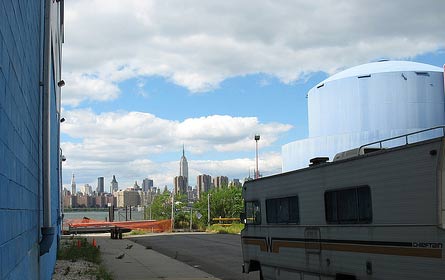

If any single City Council district epitomizes the changes in New York over the last 10 years and the uncertainty of the economic future, it is District 33. Sweeping along the waterfront from Greenpoint to Carroll Gardens, and including northern Park Slope, District 33 has more than 65 percent white residents, the most affluent population in Brooklyn and one of the densest sets of active Democratic voters in the country. But it also includes some of the poorest residents.
Not surprisingly housing and development dominate debate in the crowded race to replace David Yassky, who is running for comptroller. Seven candidates are vying in the Democratic primary on Sept. 15, which will likely decide the winner of the Nov. 3 election. An eighth contender, Elizabeth Tretter, is waging a quiet campaign solely on the Conservative ticket. She has not appeared in any of the major debates hosted this summer.
The Democrats are a diverse crew, ranging from a recent college graduate backed by a party boss to a Lexus driving Hasidic Jew who dislikes bike lanes. Most observers view Jo Anne Simon, Stephen Levin and Evan Thies as the front-runners.

Simon, 56, a disability rights attorney, holds the post female Democratic district leader, an influential political stepping-stone. Her experience as a community leader converts into a solid voter following in the southern end of District 33, which is divided geographically by the Brooklyn Navy Yard. Thies, 29, is Yassky's former chief of staff and a public policy consultant.
Levin, is the recent college graduate backed by his former employer, State Assemblymember and machine party boss Vito Lopez. Levin, who often invokes Lopez's name, has picked up a list of high profile endorsements, including support from Sen. Charles Schumer and Rep. Carolyn Maloney.

Making the race tighter, the four other Democratic candidates aggressively frame important issues that the other candidates overlook. Kenneth Diamondstone, 60, the only openly gay candidate, campaigns on his record as a community advocate and affordable housing developer. Doug Biviano, 40, is an engineer and Brooklyn Heights building super and the newest face to politics. Isaac Abraham, 59, a hardware store owner and tenants' rights advocate, is the district's only Hasidic Jewish candidate. He has called for replacing bike lanes with parking spaces on the major bike commuter thoroughfare, Kent Avenue, and recently announced a plan to cut $1.2 billion from the city budget, the specifics of which he will unveil soon.
Ken Baer, an accountant, speaks mostly on environmental and quality of life issues, gained from his experience as the head of the local Sierra Club. Unintentionally entertaining audiences in debates, he often runs over time limits or misses his cue to speak.
A District Rezoned
The campaign is being waged in a district shaped by 14 rezonings since 2001. This is the highest concentration of rezonings to affect any council district, and they have quickly altered its physical and social landscape.
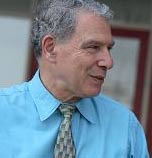
All seven Democratic candidates call for increased funding for community-based plans, also known as 197a plans, which the City Charter allows to accompany all rezonings. Simon, Abraham, Diamondstone and Thies all showcase their experience with these plans when discussing development in the district.
Simon advocated for open space and affordable housing in the Park Slope and Downtown Brooklyn rezonings, and lobbied against the Atlantic Yards project as chair and cofounder of the Boerum Hill Association. Building on what he learned in the 2005 rezoning of Greenpoint and Williamsburg, approved when he worked for Yassky, Thies campaigns for his “360 Degree Planning” proposal, which changes the city's land use review process to require input from major city agencies on how development might affect the whole array of municipal services. "We need to have all agencies weigh in on what we are planning for -- education, police, fire," he said.

Diamondstone also targets the limits of the current planning process. "The role of city planning has been to make way for luxury housing -- and we don’t need more luxury housing," he said. "There has been no planning -- for schools, parks and infrastructure." He sees the Department of City Planning as "a real enemy of the people." Diamondstone is concerned that large developers too often outweigh the community when large-scale zoning changes take place.
Abraham, who helped develop the mixed income Schaefer Landing apartments on Williamsburg's waterfront, stresses the need for more affordable housing. Although he sports Dolce and Gabana glasses and glides down Kent Avenue in a Lexus SUV, Abraham is a well-versed tenant advocate in Williamsburg.
After the Boom
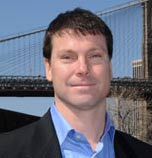
Of course the spate of luxury housing construction in the area may be over -- at least for now. Vacant, stalled, devalued or foreclosed luxury real estate now spots District 33 neighborhoods like the plague. Diamondstone, Biviano, Simon and Thies want the city to buy vacant or stalled new developments, and auction them off at more affordable rates.
Diamondstone, a lead developer on the affordable Schermerhorn House, argues that the city should offer tax abatements under the 421A program to developers anywhere in the city who designate 30 percent of all new homes as affordable -- 10 percent above the current level required.
Levin ran a tenant relocation program for Vito Lopez's Ridgewood Bushwick Senior Citizens Council that assisted residents while lead paint was removed from their apartments. Now, seemingly oblivious to the housing crash, he maintained that real estate prices in Brooklyn are still "still hot." He wants the government to require affordable housing, especially senior housing.

With the economy in recession, Thies seeks to bring city-run incubators to aid freelance businesses into the district. In 2007, Thies helped repeal the Unincorporated Business Tax, a double tax held over freelancers making less than $100,000. He now favors repealing it for people making less than $150,000. On these issues, Thies has worked with the Freelancers Union, which has endorsed his candidacy.
Campaign Cash
The winner from Democratic Primary on Sept. 15 will likely win the council seat. Whatever Democrats emerges from that contest will then face Levin who can run on the Working Families ticket, regardless of how he fares in the Democratic primary, and Tretter on the Conservative ticket in November.
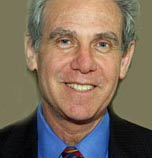
In a Democratic Primary where 70,329 possible voters will have so many choices, the winner may result from a margin of fewer than 1,000 votes. So every campaign donation hints at that margin. As of this date, Simon has amassed the largest purse, at $103,383. Levin has raised a close second with, $90,738. Thies has brought in $64,399. Diamondstone totaled $51,424 with Abraham at $45,466. Baer has raised only $23,511 and Biviano has collected $20,830. Tretter is not listed with the New York City Campaign Finance Board.
This article was written under a partnership between Gotham Gazette and the Baruch College's Department of Journalism and Writing Professions.When first published, this story said candidate Isaac Abraham was 65 years old. He is in fact 59 years old. The story has been updated to reflect the correction.
Gowanus Canal Looms over District 39 Race

The swath of brownstone Brooklyn that makes up City Council District 39 includes some of the city's most gentrified neighborhoods. But much of the debate in the race to succeed City Councilmember Bill de Blasio revolves around what to do about a remnant of the area's far grittier past -- the notoriously noxious and toxic Gowanus Canal.
Five Democrats are vying for the party's nomination to replace de Blasio, who is vacating his seat to run for public advocate. Leading the pack in contributions and endorsements are Brad Lander, the director of the Pratt Center for Community Development; Josh Skaller, a leader of grassroots political and neighborhood organizations; and Bob Zuckerman, who runs environmental nonprofits. Rounding out the Democratic field are John Heyer, a licensed funeral director and special assistant to Brooklyn Borough President Marty Markowitz, and Gary Reilly, an attorney with a background in environmental and land use law.

Although the district is overwhelmingly Democratic, it features that rarest of all elections in New York City politics: a Republican primary. George Smith has the Conservative and Republican Party endorsements, but faces a challenge for the GOP line from corporate strategist Joe Nardiello, who likens himself to Teddy Roosevelt. David Pechefsky, the Green Party candidate, wants to break what he calls the Democrats' monopoly on power in the general election on Nov. 3. Libertarian Roger Sarrabo is also running.
The Big Issue
With so many candidates divvying up the electorate, the election could come down to a very few votes. On street corners, subway platforms and even in doorways, political hopefuls are scrapping for votes one handshake at a time. And one issue they hear about again and again is the Gowanus Canal.

The Gowanus is a finger of pollution that pokes 1.8 miles through Park Slope and Carroll Gardens. More than a century of industrial dumping and combined sewer overflow has left the area filthy. Mayor Michael Bloomberg and the federal Environmental Protection Agency have opposing plans on how to go about a cleanup process that will take at least a decade to complete.
Bloomberg calls for spending $175 million in public funding largely to deal with the raw sewage that runs into the canal. But it remains unclear where the city would find an additional $200 million or more needed to clean up other contaminants.
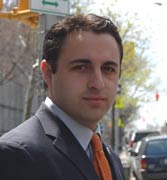
For its part, the Environmental Protection Agency's plan would designate the canal a Superfund site. That would require that private companies responsible for the pollution ante up for the cleanup. Critics of this solution say possible litigation could drag the cleanup process out for years.
While the Bloomberg administration opposes the Superfund idea, the Democratic candidates and Pechefsky generally agree that due to the expense and complex nature of the cleanup, only the Environmental Protection Agency has the expertise and authority to see the project through.
Bloomberg's most vocal critic on this issue is Skaller, who said, "I'm not sure what the mayor's plan is from week to week."
Reilly, Lander, and Heyer all express concerns that neither the mayor's plan nor the federal government's addresses the antiquated infrastructure that allows for combined sewer overflow, which means storm water and raw sewage enter the canal via the same drainage system after even moderate rains. Heyer does not believe the Environmental Protection Agency and mayor's plan are exclusive, and no matter which option is chosen, he wants the city to continue its plans to improve water circulation in the canal.

Smith worries that the mayor's plan relies too heavily on corporate money, even though the city calls for responsible corporations to pay for 35 percent of the cleanup, and Superfund designation calls for them to pay 100 percent. Nardiello is unimpressed by either solution because neither, he said, has a timeline or a strategy for addressing property values and air quality during cleanup.
As for what would follow any cleanup, most candidates envision a mix of business, industrial and residential use that conforms to the feel of the neighborhood and provides some public access to the waterfront. Smith, the owner of a party supply rental shop, proposes mostly affordable housing. As a small business owner, he believes too many new stores along the canal could hurt businesses that already exist on Court Street. Skaller, the former associate director of computer music at Harvard, mentions the possibility of an artist community.
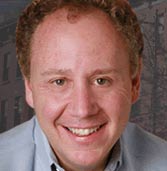
Zuckerman, who is on leave from his position as director of the Gowanus Canal Community Development Corp. to campaign full time, pulls from his experience as director of the Gowanus Canal Conservancy when he suggests creating so-called "sponge parks" that would work as natural water filters. He also proposes establishing a green district in partnership with the nearby Polytechnic University that would feature alternative energy business, environmentally friendly construction and the like.
A Tough Battle
With eight men -- yes, all men -- competing for what amounted to 21,000 votes in 2005, candidates are pulling out all the stops as the primary nears.
Smith filed a suit challenging the validity of petition signatures of his Republican opponent, Nardiello, and Nardiello filed his own suit questioning Smith's residency in the district. The suits amounted to much ado about nothing, and both candidates are still in the race.
On the Democratic side, Lander is touting his status as the one candidate with children in public school, while noting Skaller's son attends private school. Skaller says the decision to send his son to private school is based on the child's special needs. Lander and Skaller have each charged the other with campaign finance irregularities.
On the endorsement front, Lander has the backing of U.S. Rep. Jerrold Nadler and of the Working Families Party, while State Assemblymember James Brennan supports Skaller. Heyer, the youngest candidate in the race, has secured the endorsements of State Assemblymember Joan Millman and the International Longshoremen's Association. Zuckerman won a late endorsement from Rep. Anthony Weiner. Gary Reilly has the personal endorsement of Maria Pagano, president of the Carroll Gardens Neighborhood Association.
In the race for funds, Lander and Skaller lead the way at $116,621 and $101,508 respectively. Zuckerman has reported $89,624 in contributions, while Heyer claims $64,825. Next is Reilly with $27,265 followed by Pechefsky with $14,129. Smith has tallied $2,265, and as of the last reporting date on Aug. 14, Nardiello showed no contributions.
Areas of Agreement
The intensity of the campaign might conceal the fact that on many issues most of the candidates agree. For example, on mayoral control of city schools, the candidates generally concur that anything is better than the old Board of Education, but they all are concerned with what they see as a lack of parent input in the current system. Only Nardiello approves of the current structure of the Department of Education.
The remaining seven candidates want to establish checks and balances, such as City Council approval of the chancellor, council appointments to the citywide Educational Policy Panel, fixed terms for board members and budgetary oversight. The most caustic words come from Reilly, who charges that school governance under Bloomberg has been "arbitrary" and "capricious."
Zuckerman said that whoever is chancellor should have an educational background, unlike current Schools Chancellor Joel Klein, who made his career in antitrust law.
All eight candidates decry the City Council's voting to extend the mayor's and their own term limits, overturning voters in two separate referendums. Only Nardiello believes, because of the recession, Bloomberg should run again. Pechefsky, Zuckerman, Heyer, Lander, Reilly and Skaller support a binding referendum on term limits.
All the candidates share the basic idea that any rezoning in the area should fit within the character of the community.
Everyone supports more affordable housing, although they differ on how to accomplish that. Nardiello wants to use eminent domain to seize stalled developments and focus on housing for seniors. Pechefsky calls for housing that would promote integration among income groups. Reilly wants stronger rent regulation. Heyer believes preference should be given to middle-income homebuyers and those already in the community, while Lander wants to give breaks to police officers, teachers and first-time homebuyers. Citing his history as director of both the Pratt Center for Community Development and the Fifth Avenue Committee, Lander also wants tax breaks and other incentives taken from builders who are sitting on stalled projects.
Zuckerman proposes the creation of community land trusts in which a non-profit organization would own a large piece of land and private residents would have individual homes on it. He also thinks developers should set aside 20 percent of homes in new developments for affordable housing. But Skaller, a volunteer organizer with Develop Don't Destroy Brooklyn is skeptical. "The City Council is bought and paid for by developers," and so, he said, with 80 percent of apartments being sold as luxury units, the median price for all homes rise.
This article was written under a partnership between Gotham Gazette and the Baruch College's Department of Journalism and Writing Professions.


